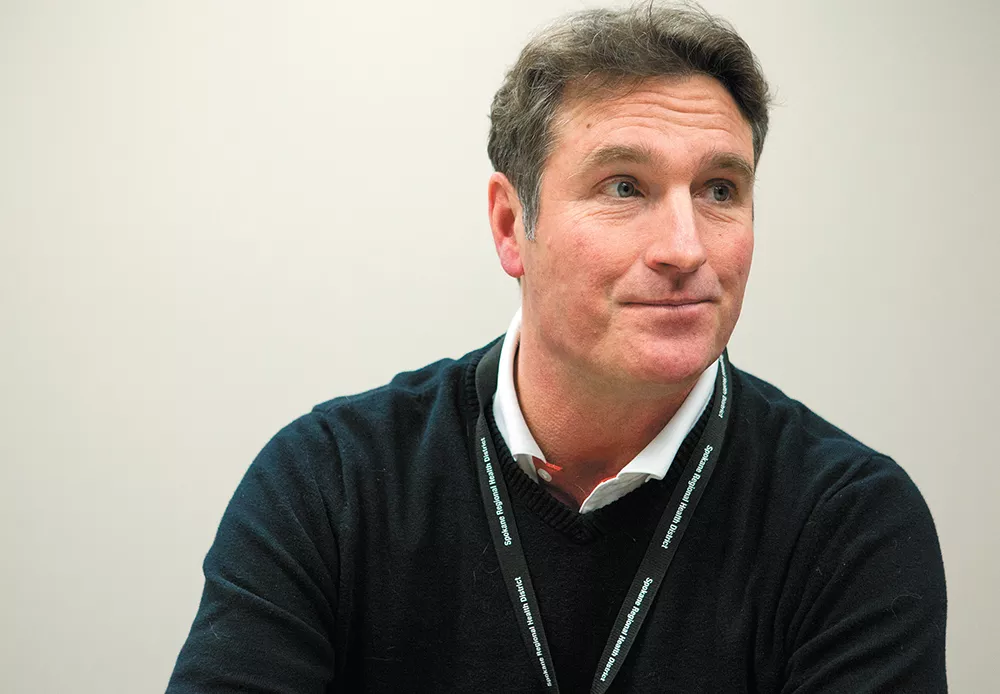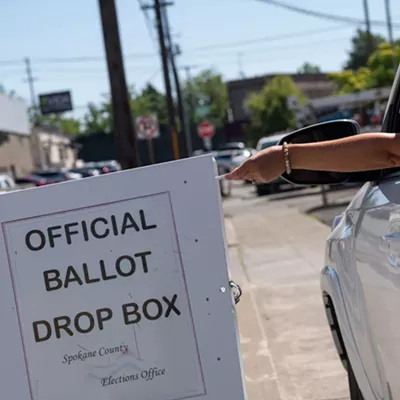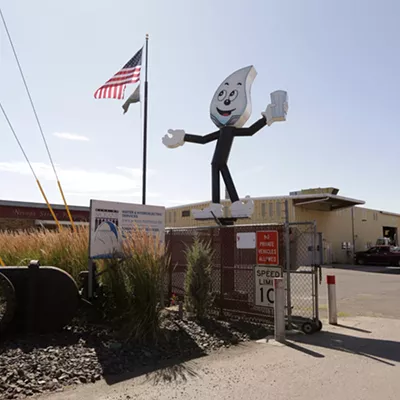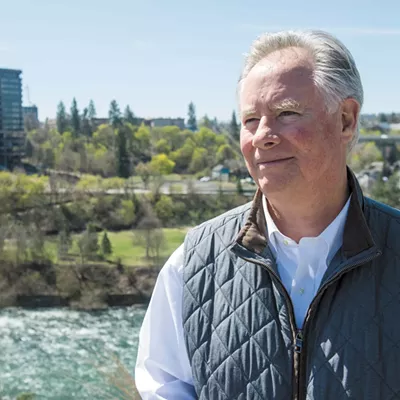
Back in 2014, when he was the medical director of the opioid treatment program at the Spokane Regional Health District, Dr. Matt Layton saw firsthand just how useful Washington state's prescription monitoring program could be.
With a few clicks and keystrokes, he could pull up all the prescription drugs each of the clinic's patients had been issued. And sometimes that information raised alarm bells.
"We had a guy obtain 700 pills of benzodiazepine, all through the same clinic and the same pharmacy," Layton learned.
Benzos are particularly dangerous when mixed with opioids. The patient, Layton quickly figured out, had been gaming the system by managing to get on four different benzo prescriptions, of varying strengths, simultaneously.
Yet, 70 percent of Washington state's doctors who prescribe controlled substances, like benzos or opiates, aren't even registered on the prescription monitoring program.
"Only a fraction of providers are using it," says Washington state Rep. Marcus Riccelli, D-Spokane. "That's really concerning."
Last month, the Washington state Attorney General's office proposed a solution as part of its fight against the deadly opioid crisis in the state: Make participation in the prescription monitoring program mandatory. Require doctors to look at their patients' prescriptions before prescribing additional drugs.
When the legislative session begins next month, Riccelli plans to introduce a bill to put such a mandate in place.
But getting that passed will mean overcoming skepticism, including from doctors like Layton. The Washington State Medical Association argues that, while the proposal seems like a great idea on the surface, unless the state can improve the prescription monitoring software "a mandate will only add to the administrative entanglement physicians currently face ... and, most importantly, take time away from patient care."
Ultimately, something seemingly small as computer systems not working well together may be costing lives.
THE PROMISE
The opioid crisis of the last decade was caused, in part, by doctors trying to help people.
Around the early 2000s, the medical community began to treat pain as seriously as vital signs, like a body temperature or pulse. Thomas Schaaf, president-elect of the Washington State Medical Association and a Spokane family physician, says that doctors were pushed to get a patient's pain levels down as close as possible to zero. Soon, opioids became the go-to panacea for pain.
"When I see a patient on Medicaid, it's really easy to prescribe opioids," Schaaf says. "It's much harder to get people into physical therapy, occupational therapy, acupuncture."
So Schaaf says most doctors who may be over-prescribing opioids aren't unethical docs running pill mills. They're good people "trying to do the right thing in a confusing, complicated and time-limited environment."
So the fight to solve the ensuing opioid crisis isn't just about helping the people pull themselves out of the depths of addiction: It's to prevent people from getting addicted in the first place. It's about convincing doctors to prescribe addictive opioid medications less often, using tools like the prescription monitoring program to highlight the data.
"I think one of the most effective ways we can reduce that is to have an administrator sit down with a provider," Riccelli says. "Here is where the others are, here's where you're at. And this is an anomaly. You're an outlier. You're overprescribing."
Keith Humphreys, a professor of psychiatry at Stanford University who's worked with multiple presidents on drug policy, says that prescription monitoring requirements represent a major weapon in the battle against opioid addiction. By catching patients who are "doctor-shopping" — visiting multiple physicians to scam their way into getting more drugs — doctors can get those patients into treatment. At the minimum, that information can help prevent overdoses.
"Forget the opioid crisis, you should know what controlled substances the patients are being treated with just so you don't hurt them," says Humphreys.
THE PROBLEM
Yet across the country, Humphreys says, doctors have been skeptical about requiring the use of prescription monitoring programs.
"Doctors have been one of the biggest resistors around the country for prescription monitoring programs," he says. "Medicine has been very good at jealously guarding their autonomy."
Part of the problem is that the quality of monitoring programs can vary wildly from state to state.
"They're not resourced evenly around the country. Some places are still, like, fax technology. It's really slow and clunky, it's not upgraded regularly," Humphreys says. "Mandating people to participate in a crappy system does nothing."
In Washington state, doctors have to juggle multiple software systems that don't always work well together.
Doctors already have had to figure out electronic medical records systems that contain other patient information. But most of the time, all the information from the prescription monitoring program isn't fed automatically into those systems.
Instead, doctors or their assistants generally need to click through and log on to an entirely different system through a web browser to access their patients' pharmaceutical records.
Implementing a mandate before making sure the different system software is working together, Schaaf says, could represent yet another time-suck for doctors who are already overwhelmed and exhausted.
"Burnout's a huge problem with medicine right now," Schaaf says.
Riccelli recognizes that a software upgrade is due. "These vendors need to make sure those electronic health records can talk to each other," Riccelli says.
There are encouraging signs: Epic Systems, which built one of the most common medical records systems in the country, says that their software is already connected to the prescription monitoring program in 10 different states. It works with Washington state's system, too.
Yet currently, Epic's software is only connected to the state's prescription monitoring program at one Washington facility, at Valley Medical Center in Renton.
Still, the notion of a mandate isn't exactly a new idea. Kelly Richburg, a senior policy analyst in the Washington State Attorney General's Office, notes that 31 other states have broad prescription monitoring program mandates like Riccelli is proposing.
The first state to adopt a mandate was Kentucky.
"There was frustration initially," Richburg says. "Then there was acceptance of it, and eventually appreciation."
And it worked: In Kentucky, incidents of doctor shopping fell 50 percent as soon as the mandate was implemented. And in New York? They fell 90 percent, within a span of only a few months.
Neither Kentucky nor New York had monitoring programs that initially connected with electronic medical record systems. And in Washington state, Richburg points out, doctors can easily delegate the monitoring of prescription information to their office staff. It's no different from running a patient's insurance information.
CARROT OR STICK?
Even a doctor like Layton, who sees the value in prescription monitoring program, is wary of heaping yet another legally required task onto doctors.
"It's one more unfunded mandate that is in response to a serious social problem," Layton says.
Instead, he argues the key is more medical education: Prove to doctors how crucial and useful the prescription monitoring system can be, and they'll adapt it.
Schaaf says doctors are open to a prescription monitoring mandate — but only after the program can connect smoothly with electronic medical records. But Humphreys looks at it a different way.
"If we mandate docs to do this, all of a sudden physicians will be leaning on the state to improve prescription monitoring, instead of getting out of it," Humphreys says. "If you let 'em out of it until it's fixed, then they don't want it fixed."
So yes, mandate it, Humphreys suggests. But also double the budget for the technology, make it work with the major electronic medical records systems, and actually pay doctors for using it.
"I think it is a legitimate thing for the doctors to say, 'How do I pay for this?'" Humphreys says. "If you want people to do something, anything, you need to make it easy as possible." ♦





















